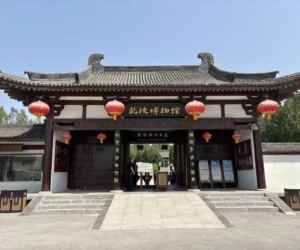Introduction to Princess Yong Tai’s Tomb Princess Yong Tai, formerly known as Li Xianhui, was the seventh daughter of Emperor Zhong Zong, Li Xian. Additionally, she was the granddaughter of Emperor Gao Zong and Empress Wu Zetian. Tragically, she died in AD 701 at the tender age of 17. Remarkably, five years later, in AD…
Tang Dynasty
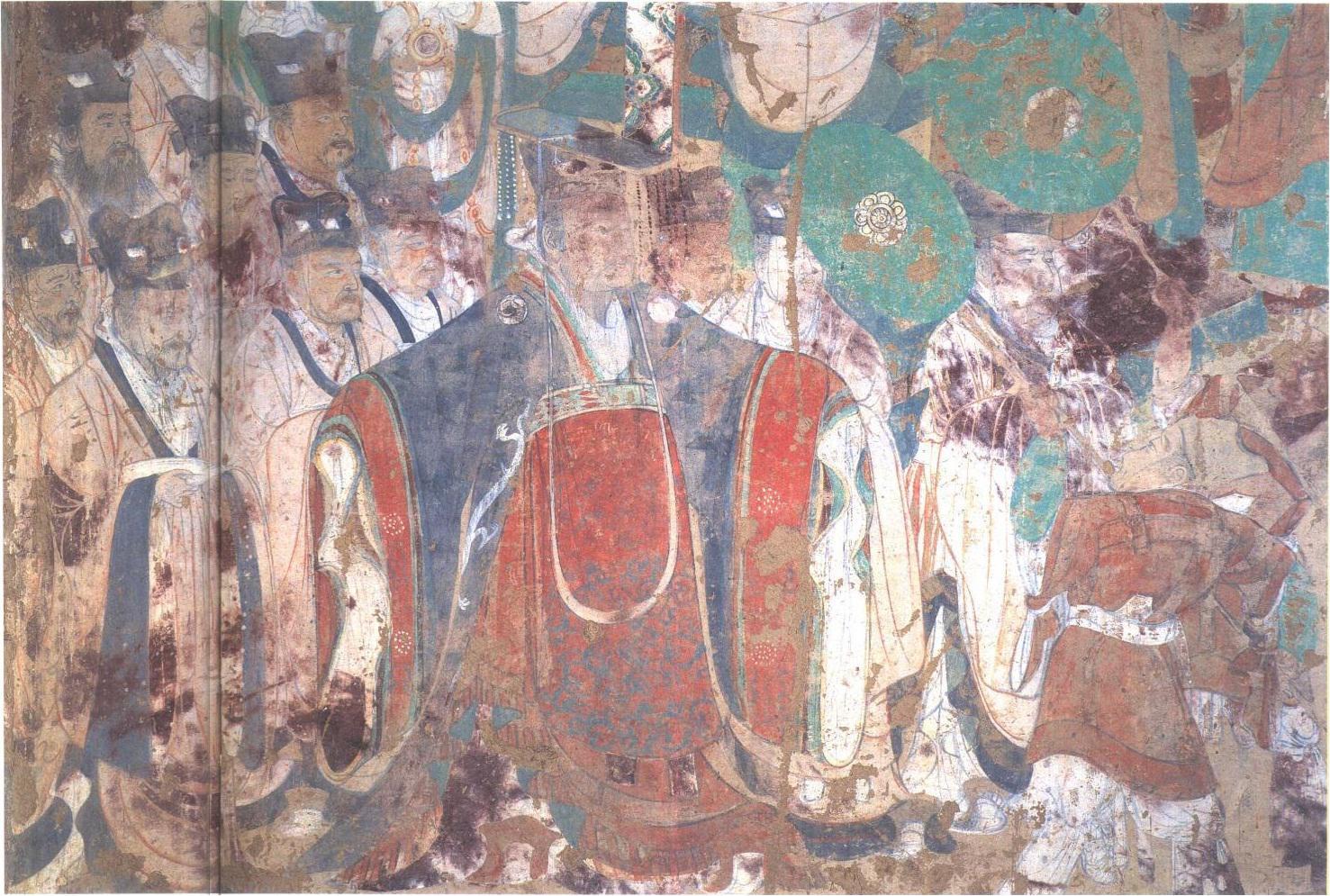
The Tang Dynasty, which lasted from 618 to 907 CE, is considered one of China’s golden ages. During the Tang Dynasty, China experienced unprecedented levels of prosperity and cultural achievements. It was an era where poetry, painting, and sculpture reached new heights, and the imperial capital, Chang’an, became a cosmopolitan center of trade and culture. This period in Chinese history is celebrated for its openness to foreign influences, which included welcoming traders and scholars along the Silk Road. The Tang rulers, like Emperor Taizong, are still revered for their leadership, which emphasized meritocracy and effective governance.
The Tang Dynasty also made significant advances in technology, literature, and social structure. The government standardized coins and improved the bureaucracy by reviving the imperial examination system, which selected officials based on merit. These exams opened pathways for many to rise in social rank, making it a time of great social mobility. The adoption and expansion of Buddhism during the early Tang period is another cultural milestone. However, like all dynasties, the Tang faced challenges such as internal power struggles and rebellions. Despite these challenges, the Tang Dynasty’s influence is evident in many aspects of modern Chinese culture. The dynasty’s contributions to the arts, governance, and social progress have made it an enduring symbol of cultural flourish in China’s long and storied history.
The Tang Dynasty’s openness to foreign cultures and ideas, facilitated by the bustling Silk Road, was a defining characteristic of its era. This ancient trade route connected China to the Middle East, allowing not only goods but also knowledge and cultural practices to flow freely between East and West. The capital, Chang’an, now known as Xi’an, was the world’s largest city at the time, a melting pot of cultures, religions, and languages. This cosmopolitan environment fostered an atmosphere of intellectual and artistic exchange that propelled the dynasty into a period of cultural renaissance. Scholars, poets, and artists from various parts of the world were drawn to Chang’an, enriching the Tang Dynasty with diverse perspectives and innovations.
The Tang Dynasty’s commitment to meritocracy was revolutionary. By refining the imperial examination system, the dynasty laid the groundwork for a bureaucracy that valued talent over lineage, a concept that was ahead of its time. This system attracted the brightest minds from across the empire, regardless of their social background, to serve in the government. The impact of this meritocratic system was profound, leading to a more efficient and capable administration that could effectively manage the empire’s vast territories. The emphasis on education and scholarly achievement during the Tang Dynasty left a lasting legacy on Chinese society, influencing its values and priorities for centuries to come.
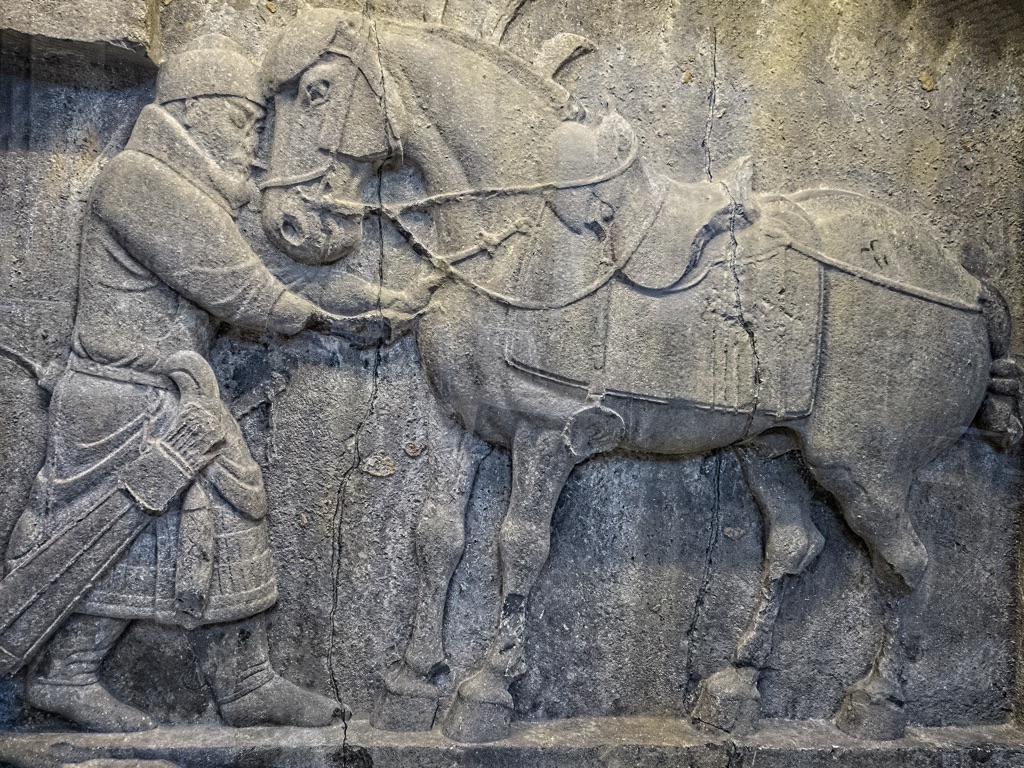
Moreover, the Tang Dynasty’s patronage of Buddhism played a significant role in shaping the spiritual and cultural landscape of China. The dynasty saw the construction of the Great Wild Goose Pagoda in Chang’an, a monument to the translation and spread of Buddhist scriptures. Buddhism’s emphasis on compassion and enlightenment resonated with the Tang populace, leading to its widespread adoption and adaptation. This period of religious openness and exploration contributed to the dynasty’s cultural diversity, adding another layer to its rich tapestry of achievements.
Despite the eventual decline of the Tang Dynasty due to internal strife and external pressures, its legacy endures in modern China. The dynasty’s innovations in governance, its contributions to the arts, and its promotion of cultural and religious diversity have left an indelible mark on Chinese civilization. The Tang Dynasty is remembered not just for its golden age of prosperity and cultural achievements but also for its forward-thinking policies that valued merit, diversity, and intellectual exchange. As such, the Tang Dynasty remains a beacon of cultural and historical significance, a testament to what can be achieved when society embraces openness, innovation, and inclusivity.
Frequently Asked Questions about the Tang Dynasty
What is the Tang dynasty known for?
The Tang Dynasty, reigning from 618 to 907 AD, is celebrated for its remarkable advancements in culture, arts, and technology, alongside its significant expansion and consolidation of the Chinese empire. This era is often considered the golden age of Chinese civilization, characterized by flourishing trade along the Silk Road, groundbreaking achievements in poetry and literature, and notable progress in various sciences and inventions. The Tang Dynasty also saw the spread of Buddhism throughout China, which profoundly influenced the culture and spiritual life of the period.
Did the Tang dynasty fall to the Mongols?
No, the Tang Dynasty did not fall to the Mongols. The Tang Dynasty came to an end in 907 AD, several centuries before the rise of the Mongol Empire under Genghis Khan in the early 13th century. The fall of the Tang Dynasty was primarily due to internal strife, rebellion, and the fragmentation of power among regional warlords, leading to a period of disunity known as the Five Dynasties and Ten Kingdoms period. The Mongols, however, did conquer the Song Dynasty, which was the dynasty that eventually succeeded the Tang Dynasty after the period of disunity.
What was the social structure of the dynasty?
The social structure of the Tang Dynasty was hierarchical and influenced by Confucian ideals, with the emperor at the apex of society. Below the emperor, society was divided into several classes: the imperial family and nobility, government officials, scholars, farmers, artisans, and merchants. The civil service examination system played a crucial role in this era, allowing men of talent to become government officials, which could elevate the status of their families. Peasants, who made up the majority of the population, were considered the backbone of the economy due to their role in agriculture, while merchants, despite their wealth, were ranked lowest because their wealth was not seen as being based on the virtuous labor of the land.
Who were the Tang Dynasty emperors?
The Tang Dynasty was founded by Emperor Gaozu, known as Li Yuan, in 618 AD. Following him, several notable emperors ruled, including Emperor Taizong (Li Shimin), who is often credited with consolidating the dynasty’s power and fostering its golden age. Emperor Gaozong, Wu Zetian (the only female emperor in Chinese history, who briefly established her own dynasty but is still often associated with the Tang), and Emperor Xuanzong, under whom the dynasty reached its zenith of power and cultural achievement, were other significant rulers. The dynasty had a total of 20 emperors over its nearly 300-year history.
What was the Tang Dynasty Capital?
The Tang Dynasty had two major capitals during its reign: Chang’an (present-day Xi’an) and Luoyang. Chang’an served as the primary capital and is renowned for being one of the largest and most cosmopolitan cities in the world at the time. It was the heart of political, economic, and cultural life in the Tang Dynasty and a terminus of the Silk Road, facilitating trade and cultural exchange with various regions. Luoyang, used as a secondary capital at various times, also played a significant role in the dynasty’s history, especially as a cultural and religious center.
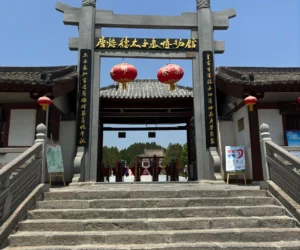
Prince Yi De’s Tomb
Introduction to Prince Yi De’s Tomb Prince Yi De, originally named Li Chongrun, was the eldest son of Tang Zhongzong. He was also the grandson of Emperor Gaozong and Empress Wu Zetian. Tragically, he died in AD 701 at the young age of 19. Remarkably, five years later, in AD 706, authorities relocated his tomb…
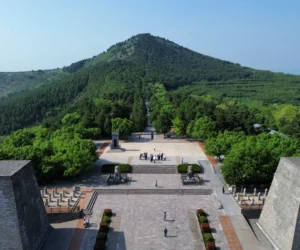
Qianling Mausoleum
Nestled on the rugged Liang Mountain, the Qianling Mausoleum stands as a historical treasure of Shaanxi, China. This Tang Dynasty tomb complex honors Emperor Gaozong and his empress, Wu Zetian. It is a remarkable example of Imperial Chinese tomb architecture. The mausoleum complex spans over 240 acres, flanked by stunning carvings and sacred way statues. It is also famed for their gendered stone guards, a unique feature that showcases both male and female figures.
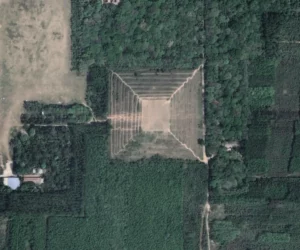
Chinese Pyramids
Understanding Chinese Pyramids The term “Chinese pyramids” refers to pyramid-shaped structures in China. These structures primarily serve as ancient mausoleums and burial mounds. They house the remains of several early Chinese emperors and their imperial relatives. Approximately 38 of these pyramids sit 25 to 35 kilometers northwest of Xi’an, in Shaanxi Province’s Guanzhong Plains. The…
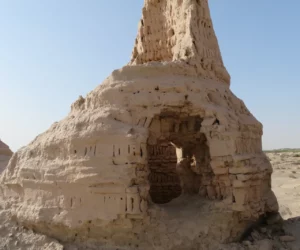
Suoyang City
Introduction to Suoyang City The Tang dynasty (618-907 AD) in China heralded profound developments in state governance, military affairs, and architecture. Suoyang City, a historical site located in Gansu Province, stands as a testimony to the architectural and strategic ingenuity of the era. This fortified city served both as a military stronghold and as an…
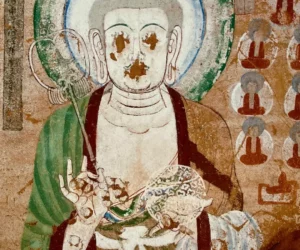
Ah-ai Grotto
Flourishing Buddhist Art in 8th Century Kucha The Ah-ai Grotto, a modest yet significant Buddhist site, lies in the Kyziliya Grand Canyon, Kuqa, Xinjiang. This standalone rock-cut cave, discovered in April 1999 by a young Uyghur shepherd named Tudi Azze, offers a unique glimpse into the religious and artistic life of 8th century Kucha. Despite…

